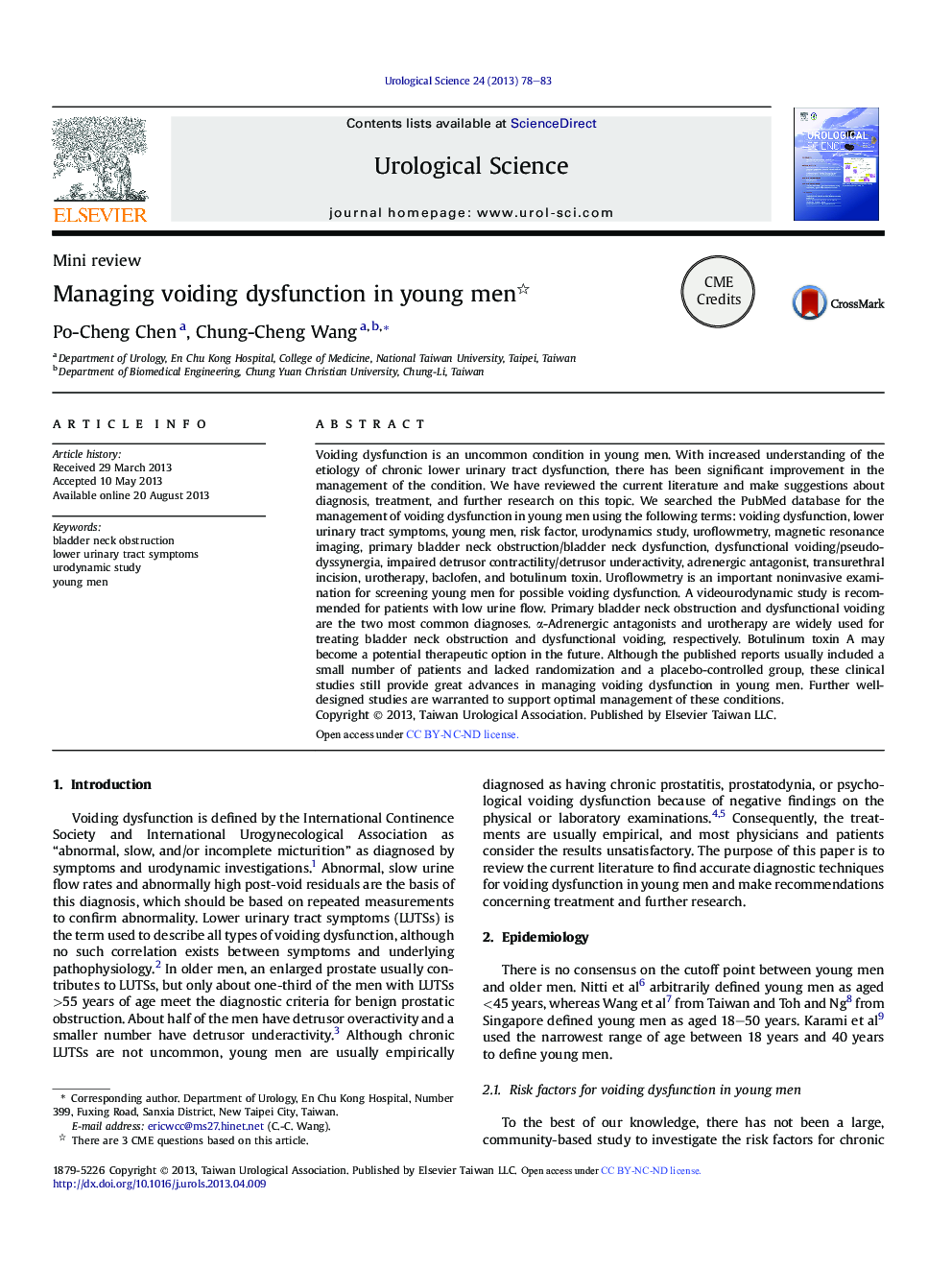| Article ID | Journal | Published Year | Pages | File Type |
|---|---|---|---|---|
| 4276296 | Urological Science | 2013 | 6 Pages |
Voiding dysfunction is an uncommon condition in young men. With increased understanding of the etiology of chronic lower urinary tract dysfunction, there has been significant improvement in the management of the condition. We have reviewed the current literature and make suggestions about diagnosis, treatment, and further research on this topic. We searched the PubMed database for the management of voiding dysfunction in young men using the following terms: voiding dysfunction, lower urinary tract symptoms, young men, risk factor, urodynamics study, uroflowmetry, magnetic resonance imaging, primary bladder neck obstruction/bladder neck dysfunction, dysfunctional voiding/pseudodyssynergia, impaired detrusor contractility/detrusor underactivity, adrenergic antagonist, transurethral incision, urotherapy, baclofen, and botulinum toxin. Uroflowmetry is an important noninvasive examination for screening young men for possible voiding dysfunction. A videourodynamic study is recommended for patients with low urine flow. Primary bladder neck obstruction and dysfunctional voiding are the two most common diagnoses. α-Adrenergic antagonists and urotherapy are widely used for treating bladder neck obstruction and dysfunctional voiding, respectively. Botulinum toxin A may become a potential therapeutic option in the future. Although the published reports usually included a small number of patients and lacked randomization and a placebo-controlled group, these clinical studies still provide great advances in managing voiding dysfunction in young men. Further well-designed studies are warranted to support optimal management of these conditions.
